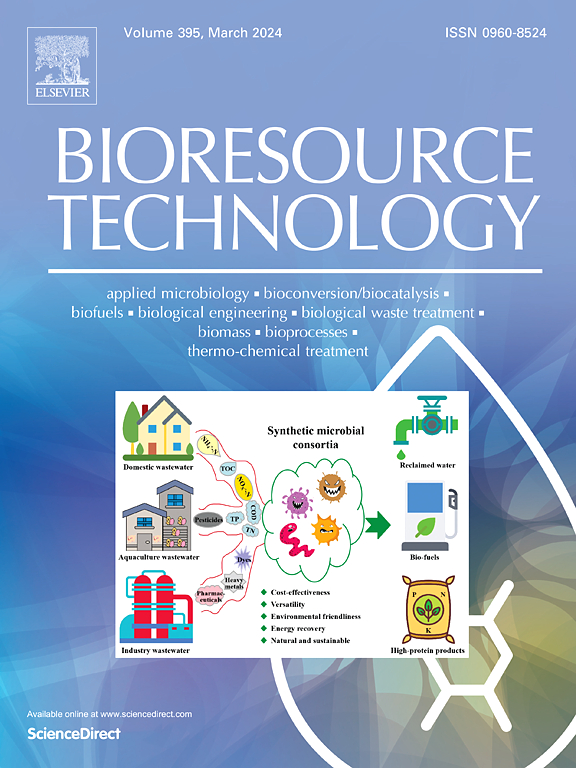Exploiting synergy of dopamine and stressful conditions in enhancing Haematococcus lacustris biomass and astaxanthin yield
IF 9.7
1区 环境科学与生态学
Q1 AGRICULTURAL ENGINEERING
引用次数: 0
Abstract
Dopamine (DA) has attracted attention because of its effects on利用多巴胺和应激条件的协同作用提高漆尾血球藻的生物量和虾青素产量
多巴胺(DA)因其对漆虫藻(Haematococcus lacustris)生物量、虾青素产量和生理反应的影响而备受关注。与盐度胁迫和强光相比,用 25 μM DA 和 1 g L-1 氯化钠处理的藻类的生物量(1.41 g L-1)、虾青素含量(32.37 mg/g)和虾青素产量(3.51 mg L-1 d-1)分别增加了 7.63%、41.25% 和 52.04%。外源 DA 处理促进了脂质的合成,同时降低了碳水化合物和蛋白质的含量。此外,在 DA 诱导下,胡萝卜素生成和脂肪生成相关基因上调。抑制活性氧和自噬,以及激活有丝分裂原激活蛋白激酶,促进了虾青素在 DA 诱导下的积累。此外,通过调节呼吸代谢中间产物、γ-氨基丁酸分流和重要植物激素的水平,DA的应用促进了虾青素的生物合成。这些发现为在胁迫条件下提高 H. lacustris 的生物量和虾青素产量提供了一种潜在且成功的生物技术方法。
本文章由计算机程序翻译,如有差异,请以英文原文为准。
求助全文
约1分钟内获得全文
求助全文
来源期刊

Bioresource Technology
工程技术-能源与燃料
CiteScore
20.80
自引率
19.30%
发文量
2013
审稿时长
12 days
期刊介绍:
Bioresource Technology publishes original articles, review articles, case studies, and short communications covering the fundamentals, applications, and management of bioresource technology. The journal seeks to advance and disseminate knowledge across various areas related to biomass, biological waste treatment, bioenergy, biotransformations, bioresource systems analysis, and associated conversion or production technologies.
Topics include:
• Biofuels: liquid and gaseous biofuels production, modeling and economics
• Bioprocesses and bioproducts: biocatalysis and fermentations
• Biomass and feedstocks utilization: bioconversion of agro-industrial residues
• Environmental protection: biological waste treatment
• Thermochemical conversion of biomass: combustion, pyrolysis, gasification, catalysis.
 求助内容:
求助内容: 应助结果提醒方式:
应助结果提醒方式:


